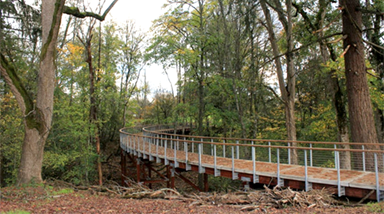Garden & Nature News July 2024

Treekeepers of Washington County programs
We work to protect and advocate for trees in urban unincorporated Washington County. Don’t miss our upcoming events! All of them are free. Visit the Treekeepers website to learn more.
Tree Talk Webinar—Tree Ordinances: How Communities Can Protect Existing Trees
Wednesday, July 17, 6:30-8:30 pm, Zoom, Zoom meeting registration here, free
Trees are typically regulated at the local level (City, County, HOA, etc.) with relatively few state or federal laws protecting trees. Each community decides, more or less separately, which trees can and can’t be removed and what information is required in order to approve tree removals (permits). Depending on where in Washington County a tree is growing, there may be essentially no protection, a formal permitting process, or it may depend on why the tree is being removed.
Ryan Gilpin is Principal Consultant at Nidus Consulting a Portland based arboriculture and ecology consulting company. As a consulting arborist, Ryan has read and navigated hundreds of different ordinances, mostly related to construction across North America. Ryan will review with us: what he looks for in reading ordinances, some important details in the ordinances across Washington County, how these compare to other parts of North America, and how communities typically develop ordinances.
Tree Walk: Orenco Woods Nature Park

Saturday, July 20, 10 am-12 pm, Hillsboro (location provided after registration), registration form here, free
Join Treekeepers on a walk through the Orenco Woods Nature Park. The 44-acre park, co-owned by Metro and the City of Hillsboro, sits along Rock Creek, a major tributary to the Tualatin River. A segment of the Rock Creek Regional Trail runs through the park over a majestic bridge. A network of looped trails weave their way through the site providing visitors a walk through rolling landscape, open meadows, oak savannah, riparian habitat, forested areas and a glimpse at a variety of birds and wildlife. Although parts of the trails are paved, other segments are made of compacted crushed gravel which is firm and stable. Portions of some trails exceed 5% slope.
On our walk we will talk about the history of the site. At the end of the trail, get your picnic basket to have your lunch while socializing with fellow tree lovers.
Tips for Summer Watering
From the One Green World newsletter
Water deeply and infrequently: Most in-ground plants will benefit from deep waterings once a week that thoroughly soaks the soil, both on the surface and deep through the soil layers. This encourages deeper root growth making the plant more resilient.
Water the whole root zone: Watering in a way that encourages both lateral as well as deep root growth will make for a healthy root system. Using drip tape spaced at 12″ apart is a great way to do this. If you’re planting climate appropriate plants that won’t need supplemental water after establishment, you can reuse that drip line on your new plantings and get the most out of all that plastic.
Water at the right time of day: Making sure your plants are watered before they need it is the best way to ensure they don’t suffer a hydro deficit. Water days before the heat wave arrives, instead of once it’s here. Ideally if you can water before sunrise, or as early in the morning as possible, your plants will have time to fully uptake that water before the photosynthesis begins for the day.
Plant with hydro zones in mind: Researching your plants’ water needs and grouping them according is the easiest way to ensure they will thrive. Keep the mediterranean garden dry in summer, the cactus dry in winter, and keep the apple orchard watered all summer!
Listen to your plants and your intuition: If a plant is really struggling, don’t be afraid to shade it or give it extra water. Even newly establishing drought tolerant plants need supplemental water to get established. By paying attention to how the plant reacts to different temperatures and adjusting your care accordingly you can keep almost any plant alive, even through the most extreme heat waves!
More smart watering information is available on the Tualatin Valley Water District site here.





